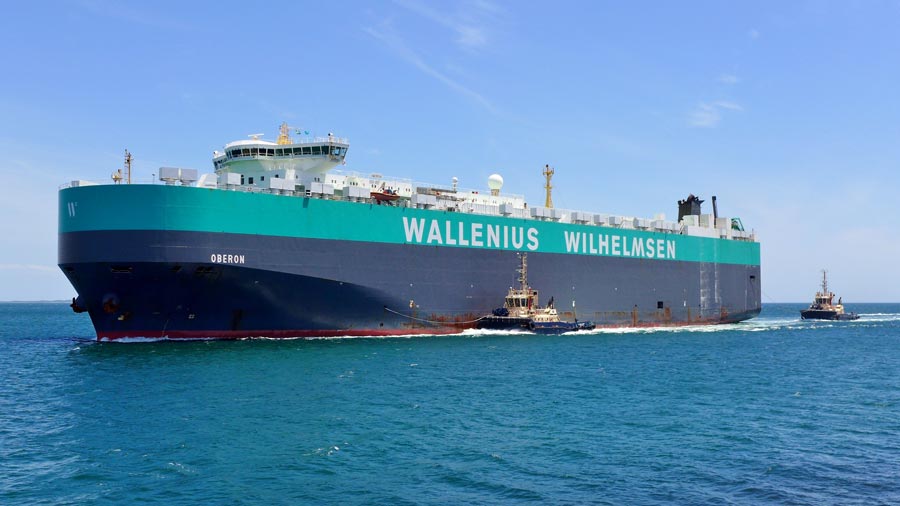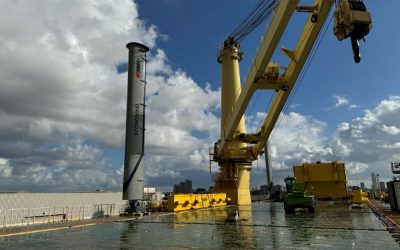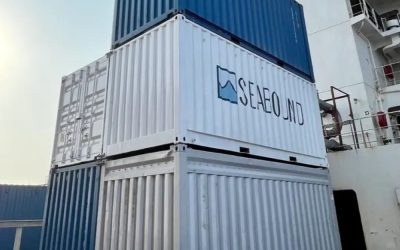AI: transforming the fleet of today and tomorrow
Angus Whiston, communications director, DeepSea Technologies
Traditional weather routing has been used for years in shipping, to “optimise voyages” by analysing weather forecasts – to plot the safest way of getting from point A to B. Now, landmark developments in artificial intelligence (AI) are rendering old weather routing practices a thing of the past. AI can unlock a wide range of new applications, influencing the design of newbuild vessels, and helping to optimise the existing fleet.
As new thinking enters this traditional field, AI technology is transforming it to such a degree that it could be classed as a wholly different solution. At DeepSea Technologies, we call this approach ‘performance routing’. Evolving weather routing into a transformative decarbonisation tool, performance routing offers powerful potential when it comes to meeting the requirements of incoming regulatory frameworks like CII and EEXI, whilst simultaneously maximising vessel profitability.

DeepSea Technologies communications director Angus Whiston
As a result of high-frequency data capture, naval architects are now able to gain an in-depth understanding of how efficiency improvement measures – such as wind assistance or propeller enhancements – affect vessel performance. This, in turn, can affect the design of future vessels, but also the optimal operation of the existing fleet, always maintaining the goals of safety and compliance in an ever-changing regulatory landscape.
As integration of this technology into shipping’s everyday operations continues, new entrants into the workforce benefit from the support these insights can offer, while the value of senior technicians’ knowledge is also enhanced – allowing for greater focus to be placed on driving innovation within the naval architecture and engineering fields.
Data-driven efficiency meets green challenges
Every ship will be required to comply with CII as early as January 2023. The new rules will effectively mean that vessels need to become less carbon intense through to 2030. According to a recent report from VesselsValue, however, more than 75% of all tankers, bulkers and containerships will not be compliant. This means that ship and cargo owners alike must urgently make use of all available efficiency solutions to avoid substantial commercial implications.
Performance routing adds layers of data-driven accuracy to weather routing capabilities, opening doors to a wealth of previously impossible applications. These new applications are allowing shipping companies to truly optimise voyages for the first time – considering not only weather conditions, but also an individual ship’s DNA. Performance routing unlocks increased fuel savings, performance and efficiency gains and enables just in time (JIT) arrivals for enhanced impact across shipping’s entire value chain.
This technology also brings the industry closer to overcoming one of its most persistent challenges – unpredictability. AI now powers systems that adapt in real-time to changing circumstances, allowing for the correct actions to be taken when unpredicted weather conditions inevitably occur. This turns the unpredictable into something that vessels and masters can intelligently manage, in real time, and offers a new, ground-breaking level of control in an era when every decision can mean the difference between success or failure.
The importance of embracing change
Compliance with incoming regulations will force change as much as the new ESG table stakes, ensuring that all opportunities for emissions reduction and decarbonisation are being utilised. That said, obstacles preventing the widespread adoption of these available solutions are delaying the progress that shipping can and must make to meet 2030-2050 environmental goals.
Historically, shipping’s decarbonisation progress has been hampered by the split incentive issue, which stems from antiquated charter party agreements that prioritised quick arrival above all else. Despite the availability of cost and performance efficiency gains offered by the likes of, for example, AI-based solutions, this dynamic divides responsibility for fuel costs between shipowners, operators, and charterers, resulting in the lack of a clear value proposition to invest in eco-efficiency technologies.
A change of tide
Previous perceptions of AI as ethereal and mysterious are now shifting. DeepSea recently announced a partnership with the market leader in global ro-ro shipping and vehicle logistics, Wallenius Wilhelmsen. This represents a watershed moment for shipping’s digitalisation, marking a key milestone in the mass uptake of AI and its practical application via voyage optimisation as a crucial enabler of operational efficiencies.
As Wallenius Wilhelmsen embraces DeepSea’s AI-powered voyage optimisation tool, Performance Routing, as a key part of its decarbonisation strategy, it will transition to an entirely AI-based approach to voyage planning across its entire fleet. This decision, the first of its kind globally, was made after a collaborative trial period over 18 months, involving rigorous step-by-step testing.
Going forward, I look forward to seeing how AI-based solutions are utilised in maritime, and DeepSea remains committed to developing the technology for use cases across the sector. It’s of critical importance that other major players within the shipping sector realise, sooner rather than later, what access to highly accurate data actually represents: an abundance of cost and carbon emissions savings. Furthermore, it can encourage better data transparency, and save latent time locked in the supply chain. This can trigger progression that runs far deeper and further than IMO regulations.




